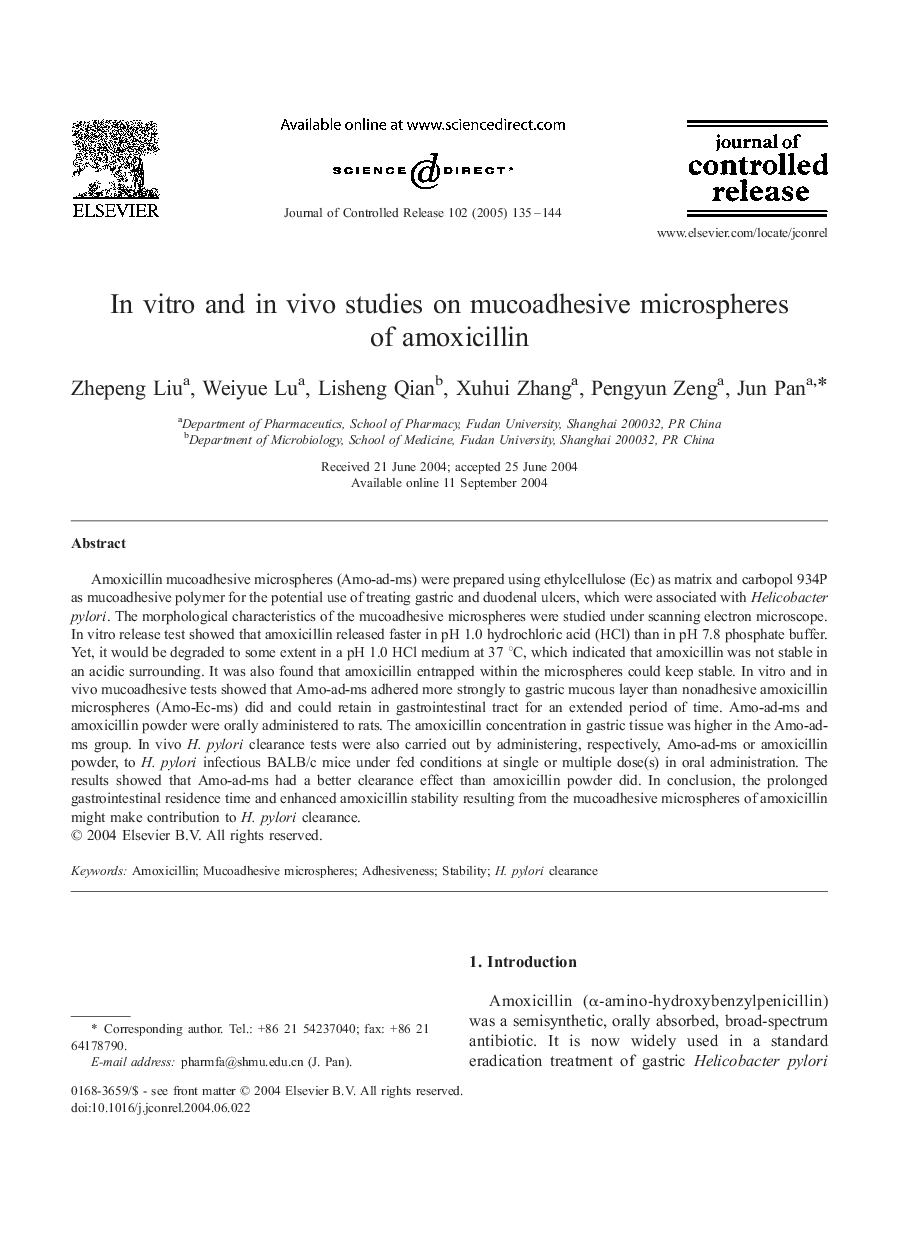| Article ID | Journal | Published Year | Pages | File Type |
|---|---|---|---|---|
| 10613532 | Journal of Controlled Release | 2005 | 10 Pages |
Abstract
Amoxicillin mucoadhesive microspheres (Amo-ad-ms) were prepared using ethylcellulose (Ec) as matrix and carbopol 934P as mucoadhesive polymer for the potential use of treating gastric and duodenal ulcers, which were associated with Helicobacter pylori. The morphological characteristics of the mucoadhesive microspheres were studied under scanning electron microscope. In vitro release test showed that amoxicillin released faster in pH 1.0 hydrochloric acid (HCl) than in pH 7.8 phosphate buffer. Yet, it would be degraded to some extent in a pH 1.0 HCl medium at 37 °C, which indicated that amoxicillin was not stable in an acidic surrounding. It was also found that amoxicillin entrapped within the microspheres could keep stable. In vitro and in vivo mucoadhesive tests showed that Amo-ad-ms adhered more strongly to gastric mucous layer than nonadhesive amoxicillin microspheres (Amo-Ec-ms) did and could retain in gastrointestinal tract for an extended period of time. Amo-ad-ms and amoxicillin powder were orally administered to rats. The amoxicillin concentration in gastric tissue was higher in the Amo-ad-ms group. In vivo H. pylori clearance tests were also carried out by administering, respectively, Amo-ad-ms or amoxicillin powder, to H. pylori infectious BALB/c mice under fed conditions at single or multiple dose(s) in oral administration. The results showed that Amo-ad-ms had a better clearance effect than amoxicillin powder did. In conclusion, the prolonged gastrointestinal residence time and enhanced amoxicillin stability resulting from the mucoadhesive microspheres of amoxicillin might make contribution to H. pylori clearance.
Related Topics
Physical Sciences and Engineering
Materials Science
Biomaterials
Authors
Zhepeng Liu, Weiyue Lu, Lisheng Qian, Xuhui Zhang, Pengyun Zeng, Jun Pan,
